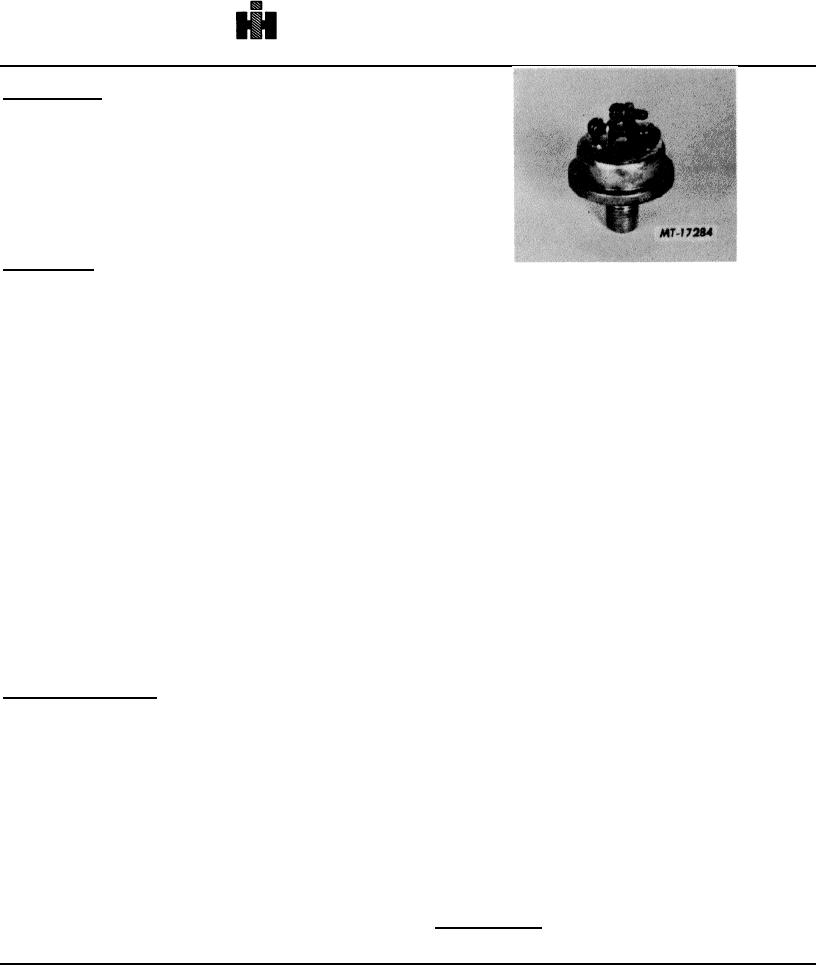
BRAKES-AIR
TRUCK SERVICE MANUAL
SERVICE CHECKS
Operating Test
Operation of the low pressure indicator may be
checked with ignition switch on, then by reducing the
reservoir pressure and being sure that the contacts close
when the reservoir pressure is between 76 pounds
maximum and 64 pounds minimum. The contacts will be
closed when the warning light or electrical buzzer
operates.
Leakage Test
Fig. 6
Stop Light Switch
A small vent hole is provided in the cover of the
low pressure indicator to check the condition of the
diaphragm. Cover the vent hole with soap suds or use
Leak Detector (SE2326); if a leak is indicated, it signifies
a ruptured diaphragm. Replace complete assembly.
REMOVE
1. The ignition switch should be in the "off" position.
2. Drain the air from the system.
3. Disconnect the electrical connections at the Low
Pressure Indicator.
4. Remove the Indicator from fitting.
REINSTALL
1. Install indicator in fitting where old indicator was
removed.
2. Connect electrical connections.
3. Charge air system and perform Leakage Test.
NOTE: Disassembly and reassembly of Low Pressure
Indicator is not recommended since it is only serviced as
a complete assembly.
STOP LIGHT SWITCH
DESCRIPTION
The stop light switch (Fig.
6) is an
electropneumatic switch which operates in conjunction
with the brake valve and stop lights by completing the
MAINTENANCE
electrical circuit when a brake application of 5 psi or
more is made.
Every month or every 10,000 miles check all
electrical connections.
Both the primary and secondary brake systems are
Every year or 100,000 miles the stop light switches
equipped with a stop light switch on a straight truck. If a
should be replaced.
failure should occur in either the primary or secondary
SERVICE CHECKS
systems, the system which is functioning properly will
Operating Tests
provide stop lights when the brakes are applied.
1. Both stop light switches must be checked in-
145

